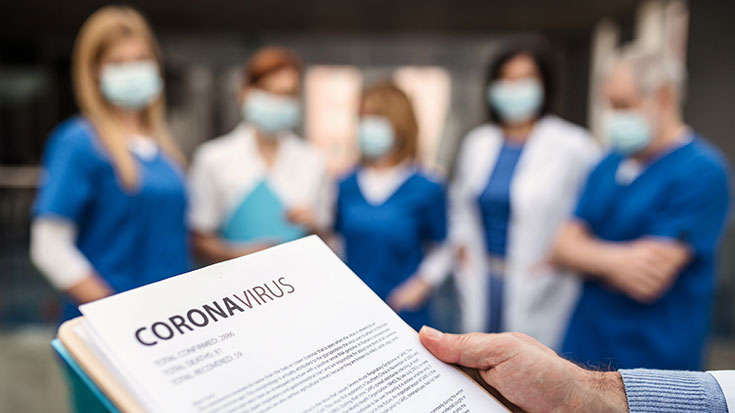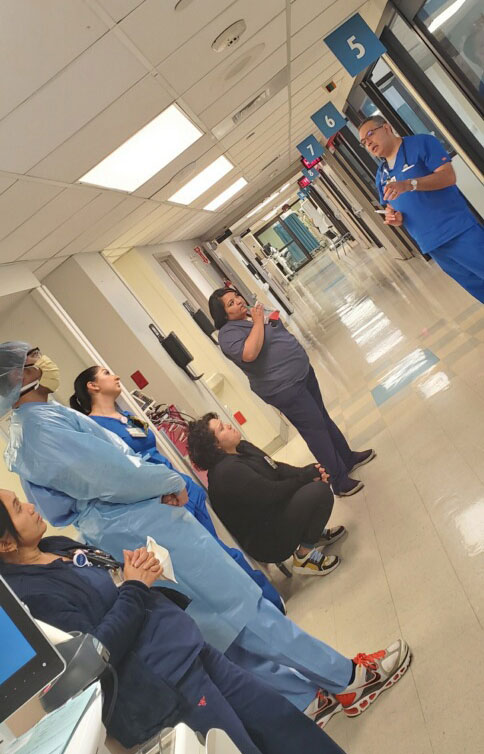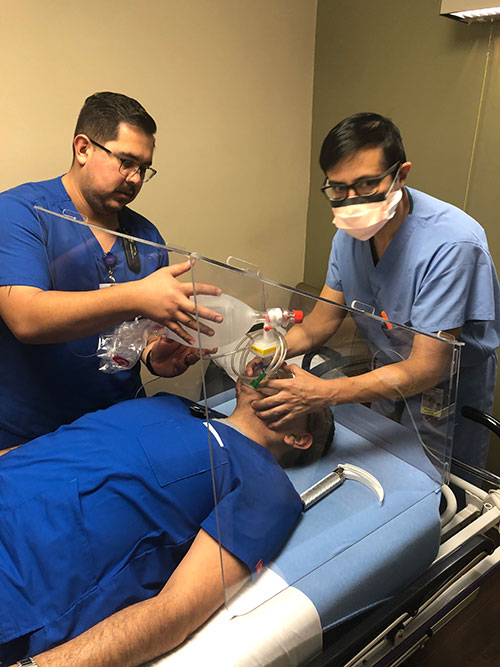
Teamwork has always been a big topic of discussion in health care, and for the most part, the various disciplines involved in caring for patients have become increasingly invested in ensuring a team mindset at the bedside.
That good faith effort became an absolute necessity earlier this year when it became abundantly clear that the world was entering a pandemic capable of stretching the health care system to its limits.
Two respiratory therapists share what they’ve learned about teamwork during these difficult months.

Removing silos
“The COVID-19 pandemic took the world by storm,” said Renato Galindo, MPA, BSRC, RRT, CPFT, AE-C, CTTS, director of cardiopulmonary services at Medical Center Health System in Odessa, TX. “It was something respiratory care as a discipline had never seen.” Given the large number of aerosol-generating procedures performed by his department, a meeting of the minds was paramount to ensuring safety for staff and patients alike.
“The directors for critical care services and the dedicated education unit, Lisa Mota and Kourtney Pierce, and I sat our respective teams down to discuss intubation plans, clustering of care, and how other disciplines were involved,” Galindo said. “Our administrative and physician teams had regular meetings with all disciplines, including RT, to assess ways to minimize exposures and provide optimal care to the patients.”
The hospital recognized the need to remove all silos and it held multiple meetings and debriefings on various scenarios staff could encounter during the pandemic. RTs clustered care in the COVID-19 units along with their nurse partners, sharing tasks like turning, repositioning, and even helping to bathe patients to limit the number of people going into the rooms.
Galindo says many hours, more than a few of them put in over the weekends, were dedicated to preparing for the expected influx of patients, and during those meetings the value of respiratory therapy to the mission as a whole became crystal clear.

“I have been an RT for 23 years,” the manager said. “This pandemic has brought our discipline to the forefront. Our facility saw the value of our discipline, how critical a role RTs played.”
That said, he notes that no man, or discipline, is an island, and optimal patient care requires constant communication and teamwork.
“The spirit of teamwork started in March of 2020, and my hope is that it becomes a permanent part of our health care culture,” he said.
From PR to PPE coach
Donna Hawk, RRT, AE-C, works in pulmonary rehabilitation at Baystate Medical Center in Springfield, MA, and for her, COVID-19 meant shutting down the program that she has loved being a part of for many years now. “Our area was closed March 13 and just reopened June 15,” she said.
But if you think she and her colleagues sat out the crisis, think again. Staff in the outpatient areas moved to various other positions based on hospital need. In her case, that meant transitioning from helping chronic lung disease patients recover their quality of life to helping to ensure other staff members stayed as safe as possible.
“We became PPE coaches, wearing bright yellow vests, who coached nurses, doctors, environmental management — anyone entering a COVID-19 patient room — on proper PPE donning and doffing,” Hawk said.
She notes PPE was, and in many places still is, a precious commodity and guidelines on equipment like the N95 masks are constantly changing. “It was the coaches’ responsibility to educate staff on the changes that were being implemented,” she said.
Hawk and the other coaches transitioned to various shifts in the inpatient units, and the job was not always as simple as it might sound.
“The role of PPE coach was not easy, as people do not always see the role as supportive but as a police of sorts,” she said. “It was sometimes confrontational, and not welcome.”
But on the plus side, many other staff members were happy to have the support, grateful that someone was watching out for them as they navigated the new realities involved in treating so many patients with a potentially deadly contagious disease
“I worked on many floors including the ED,” Hawk said. “It was interesting to observe how each area had a different feel to it based on the team and the leadership of the areas. I definitely had my favorite areas for assignment.”
Hawk says she missed her patients in PR and her colleagues too, noting everyone in the program respects each other’s role and works together for the benefit of their patients. She’s glad to be back and reunited with those colleagues.
“I value each and every one of them more than I did before,” she said. “I enjoy the work I do and the team of people I work with every day.”
One good change
The COVID-19 pandemic has changed many aspects of life, and while no one would wish a pandemic on anyone, some of those changes may bode well for the future. As the experiences of these RTs shows, a greater appreciation for teamwork in the health care setting is certainly one of them.





